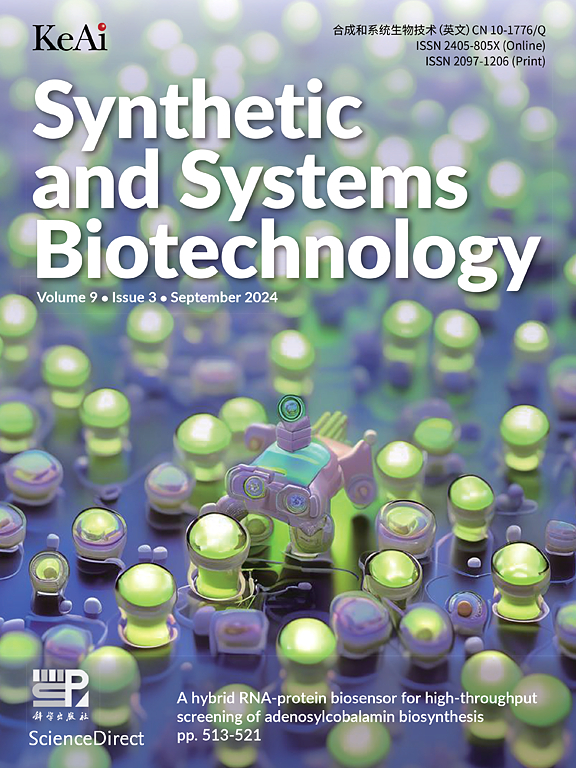通过增强糖基化和半合理设计UGT85A1在大肠杆菌中高效生产羟基皂苷
IF 4.4
2区 生物学
Q1 BIOTECHNOLOGY & APPLIED MICROBIOLOGY
引用次数: 0
摘要
羟基苷是一种重要的天然苯乙醇苷,在食品和医药领域具有广阔的应用前景。然而,植物中的低浓度和复杂的提取工艺阻碍了它的生产。尽管在大肠杆菌中合成羟基苷是一种很有前景的方法,但糖基化仍是其生产的限制因素。通过筛选糖基转移酶、过量表达磷酸葡萄糖突变酶(pgm)和UDP-葡萄糖焦磷酸化酶(galU)以确保UDP-葡萄糖(UDPG)的充足供应,成功地在大肠杆菌中构建了羟基苷的全新生物合成途径。此外,还对 UGT85A1 进行了半合理设计,以扩大受体结合袋,消除干扰羟基酪醇结合的立体阻碍。内源基因 ushA 和 otsA 被敲除,以进一步减少 UDPG 的消耗。最后,通过优化碳源的进料时间,在 5 L 发酵罐中获得了 5837.2 mg/L 的滴度。这为后续苯乙醇苷的生物合成奠定了基础。本文章由计算机程序翻译,如有差异,请以英文原文为准。
Efficient production of hydroxysalidroside in Escherichia coli via enhanced glycosylation and semi-rational design of UGT85A1
Hydroxysalidroside is an important natural phenylethanoid glycoside with broad application prospects in the food and pharmaceutical fields. However, its low concentration in plants and complex extraction hinder its production. Despite being a promising way to synthesize hydroxysalidroside in Escherichia coli, glycosylation remains the limiting factor for its production. A de novo biosynthetic pathway for hydroxysalidroside was successfully constructed in E. coli via the screening of glycosyltransferase, overexpressing phosphoglucomutase (pgm) and UDP-glucose pyrophosphorylase (galU) to ensure a sufficient supply of UDP-glucose (UDPG). Additionally, a semi-rational design of UGT85A1 was conducted to expand the acceptor-binding pocket to eliminate steric hindrance interfering with the binding of hydroxytyrosol. The endogenous genes ushA and otsA were knocked out to further reduce the consumption of UDPG. Finally, a titer of 5837.2 mg/L was achieved in a 5 L fermenter by optimizing the feeding times of carbon sources. This laid the foundation for the subsequent biosynthesis of phenylethanoid glycosides.
求助全文
通过发布文献求助,成功后即可免费获取论文全文。
去求助
来源期刊

Synthetic and Systems Biotechnology
BIOTECHNOLOGY & APPLIED MICROBIOLOGY-
CiteScore
6.90
自引率
12.50%
发文量
90
审稿时长
67 days
期刊介绍:
Synthetic and Systems Biotechnology aims to promote the communication of original research in synthetic and systems biology, with strong emphasis on applications towards biotechnology. This journal is a quarterly peer-reviewed journal led by Editor-in-Chief Lixin Zhang. The journal publishes high-quality research; focusing on integrative approaches to enable the understanding and design of biological systems, and research to develop the application of systems and synthetic biology to natural systems. This journal will publish Articles, Short notes, Methods, Mini Reviews, Commentary and Conference reviews.
 求助内容:
求助内容: 应助结果提醒方式:
应助结果提醒方式:


